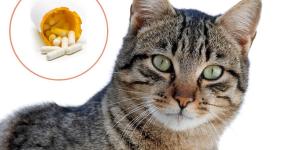Betadine for Cats - Is It Safe?



See files for Cats
Povidone-iodine is commonly sold under the brand name Betadine®. It is a drug marketed as an antiseptic for superficial wounds. It has a broad antimicrobial spectrum, being effective against various viruses, protozoa, spores, fungi and gram-positive and gram-negative bacteria. This microbicidal effect is achieved thanks to the iodine in its composition. We might be more familiar with its use in human medicine, making us wonder whether Betadine is safe for cats?
At AnimalWised we look at Betadine for cats and whether it can be used safely on our pets. We can then look at possible uses and side effects.
What is Betadine for cats?
Betadine is a medicine that contains the active ingredient povidone-iodine. It is an antiseptic for cutaneous or topical use with a broad spectrum of antimicrobial activity. This microbiocidal activity is due to the iodine content of the compound which is effective against both gram-positive and gram-negative bacteria, as well as many viruses, fungi, spores and protozoa.
Povidone is a polymer that dissolves in water and causes combination with iodine, forming the povidone-iodine complex. It also allows iodine to dissolve. With this aqueous solution of the complex, a balance is established between the concentration of iodine complex and free iodine. This allows it to act against the aforementioned pathogens that can infect the wounds, cuts or superficial lesions of the skin of your feline.
Learn more about first aid for felines with our article on treating wounds on cat paws.
Uses of Betadine for cats
Betadine is sold for veterinary use and is considered safe for cats. As an antiseptic, it can be used for:
- Small cuts
- Superficial wounds or injuries
- Minor burns
- Skin ulcers
- Skin chafing
Betadine is used for these purposes in veterinary clinics, but it is also used for preparation for animal surgery. The environment needs to be sterile, especially at the site of surgical incision. After the cat's fur is shaved, the Betadine is often applied with gauze to ensure bacteria do not enter through the incision. The solution is usually diluted before application, especially if the Betadine is otherwise for human use. This is because the cat's skin has a different pH level.
As an antiseptic, Betadine for cats is useful for cleaning and controlling possible infections on their wounds. Despite this, it is not always the best antiseptic for your cat's needs. Chlorhexidine for cats, for example, is considered safer for home use. It does not require dilution, so it is more often prescribed by veterinarians. Betadine may be less safe, but it is stronger and more effective for clinical use which is why it is used for veterinary surgeries.

How to treat a cat with Betadine
Before treating a cat's wound with Betadine, it is necessary to remove all dirt and debris around the wound. This is to reduce the risk of infection. It may be a good option to trim your cat's hair in the area which needs to be treated, especially in individuals with long hair. If you remove excess hair, impurities can be cleaned more effectively.
To clean a cat's wound with Betadine, you will need:
- Clean sterile gauze
- Saline solution or soap and water
Pour over the saline solution and clean the wound of debris. Dilute the betadine in water so that it has the color of weak tea (about 1 part Betadine to 20 parts water). Then dip the sterile gauze in the Betadine solution and apply to the wound, cut or skin lesion. Never apply Betadine directly to the mucus membranes of cats. If the cat has a wound on their mouth, then you will need to use an alternative. Betadine for cats is strictly for cutaneous use.
Whether or not it is due to a cut, you can read our related article on what to do if a cat has blood in their mouth.
Betadine side effects in cats
Generally, diluted Betadine solution should be safe for cats. If the Betadine has not been diluted and has produced a skin irritation manifested by reddened skin, itching and small blisters, it is necessary to wash the area with plenty of water and apply anti-inflammatory medications. Acute iodine toxicity could also occur in cats when ingested. This can happen when they lick the wound site if it has not been diluted. The symptoms to look out for include:
- Abdominal pain
- Pulmonary edema
- Anuria (not urinating)
- Circulatory collapse
If the product is ingested, excess iodine can also cause:
- Thyroid disorders: such ashyperthyroidism or hypothyroidism in cats.
- Goiters
- Renal disturbances: such as acute kidney disease and electrolytes such as metabolic acidosis. Learn more with our article on kidney disease in cats.
In addition, Betadine for cats is also not recommended for use in kittens or pregnant and lactating females.
This article is purely informative. AnimalWised does not have the authority to prescribe any veterinary treatment or create a diagnosis. We invite you to take your pet to the veterinarian if they are suffering from any condition or pain.
If you want to read similar articles to Betadine for Cats - Is It Safe?, we recommend you visit our Medicine category.
- Spanish Agency for Medicines and Health Products. Betadine 100 mg/ml skin solution SmPC. Available at: https://cima.aemps.es/cima/pdfs/es/ft/36340/36340_ft.pdf






